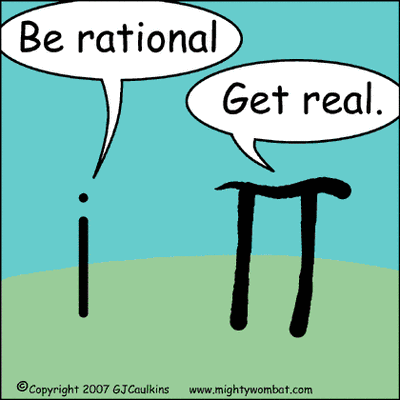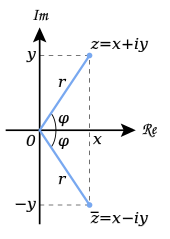A complex number is a number of the form a + bi, where a and b are real numbers and i is the imaginary unit.
- The real number a is called the real part of the complex number a + bi; the real number b is called the imaginary part of a + bi.
- By this convention the imaginary part does not include the imaginary unit: hence b, not bi, is the imaginary part.
- The real part of a complex number z is denoted by Re(z) or ℜ(z); the imaginary part of a complex number z is denoted by Im(z) or ℑ(z).
Hence, in terms of its real and imaginary parts, a complex number z is equal to . This expression is sometimes known as the Cartesian form of z.
An illustration of the complex plane. The real part of a complex number z = x + iy is x, and its imaginary part is y.
When the number line are real numbers (in the real number system):
You've probably been told that you couldn't do  yet because of that negative sign. The reason is that the answer isn't a real number. There is an answer... and it's imaginary.
yet because of that negative sign. The reason is that the answer isn't a real number. There is an answer... and it's imaginary.
Here it is:
That's an "i" forimaginary number.
|
So, what's the i?
For the imaginary number system, we just define it this way:

With this, we can do a lot of cool things we couldn't do before. One of the coolest things in math is made with imaginary numbers:
FRACTALS!
| OK, let's go back to | |
Here's what really happened with this problem:
So...
We can't pop the
A complex number is made up of a real number and an imaginary number.
Here are a few:
The official form is:




 with initial side on the positive real axis and terminal side along the line joining the origin and the point.
with initial side on the positive real axis and terminal side along the line joining the origin and the point. 
No comments:
Post a Comment